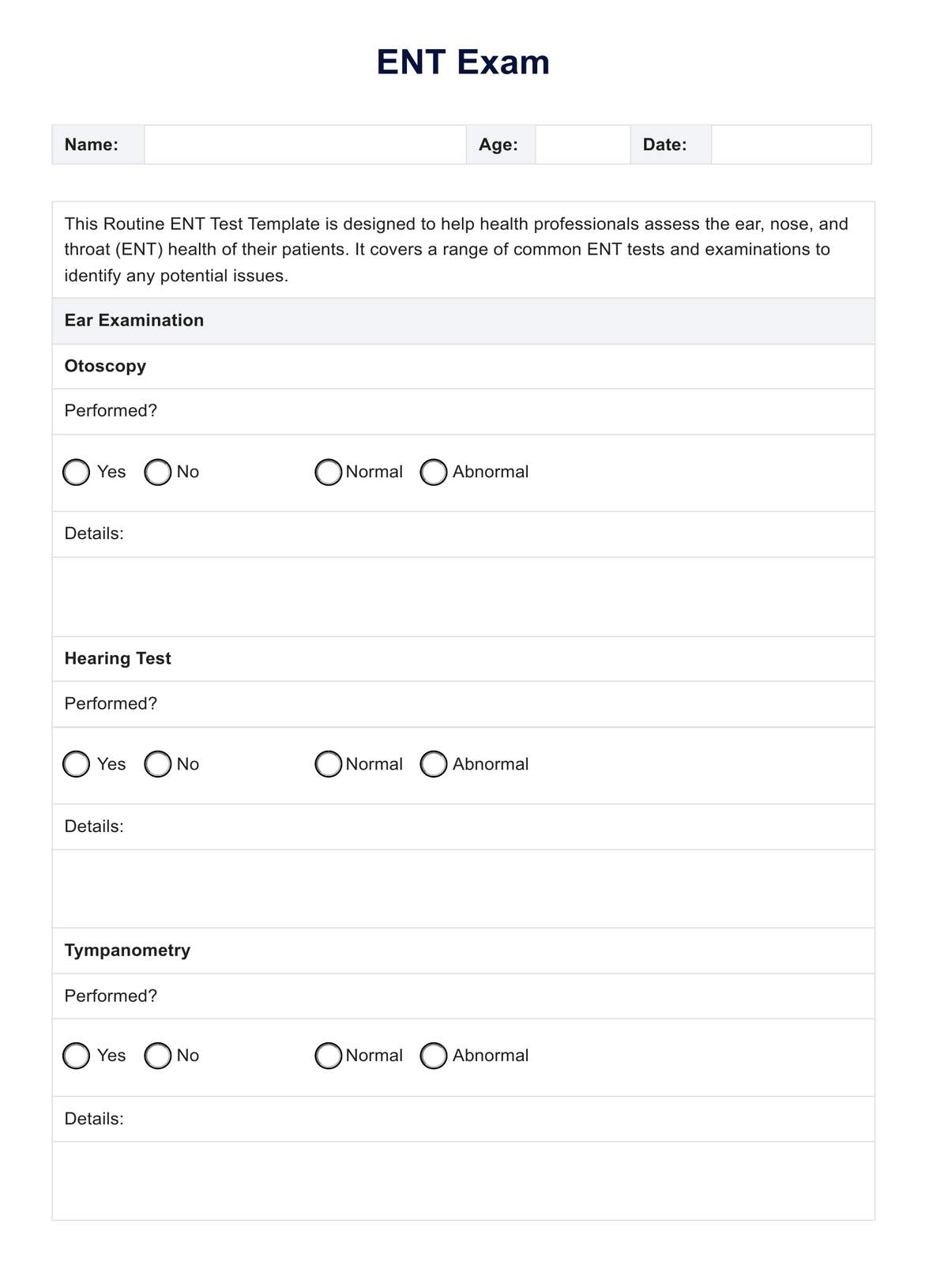ENT stands for Ear, Nose, and Throat, and it refers to a medical specialty that deals with conditions and disorders affecting these areas of the body. ENT may also be used to refer to the specialists themselves.

ENT Exam
Discover the key aspects of an ENT Exam with our comprehensive template, designed for health professionals to assess ear, nose, and throat health effectively.
Use Template
ENT Exam Template
Commonly asked questions
An ENT exam typically includes an examination of the ear (otoscopy and hearing tests), the nose (rhinoscopy and nasal endoscopy), and the throat (oral cavity inspection, pharyngeal examination, and laryngoscopy).
An ENT specialist diagnoses conditions through physical examinations, reviewing medical history, and conducting specific tests like audiometry, endoscopy, or imaging studies.
EHR and practice management software
Get started for free
*No credit card required
Free
$0/usd
Unlimited clients
Telehealth
1GB of storage
Client portal text
Automated billing and online payments











